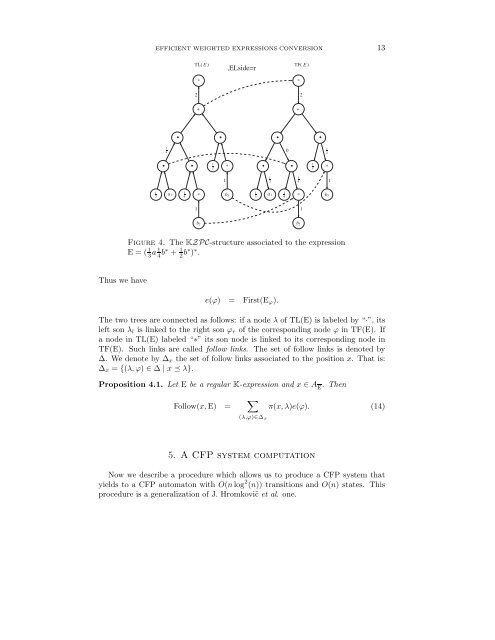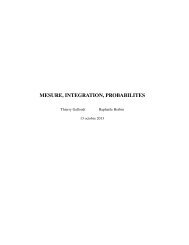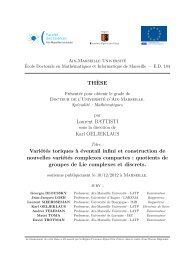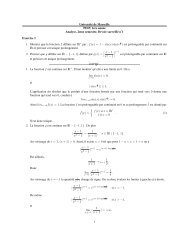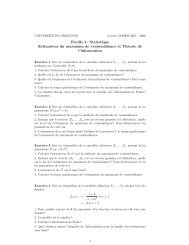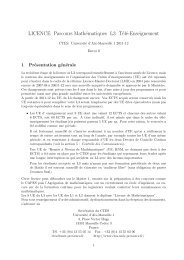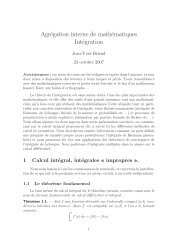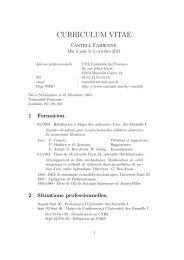Faissal Ouardi and Djelloul Ziadi Introduction - CMI
Faissal Ouardi and Djelloul Ziadi Introduction - CMI
Faissal Ouardi and Djelloul Ziadi Introduction - CMI
You also want an ePaper? Increase the reach of your titles
YUMPU automatically turns print PDFs into web optimized ePapers that Google loves.
Thus we have<br />
EFFICIENT WEIGHTED EXPRESSIONS CONVERSION 13<br />
1<br />
3<br />
1<br />
4<br />
TL( E )<br />
∗<br />
+<br />
• •<br />
• • 1<br />
2<br />
a1<br />
1<br />
4<br />
2<br />
1<br />
∗<br />
b2<br />
1<br />
∗<br />
b3<br />
,ELside=r<br />
1<br />
3<br />
TF( E )<br />
∗<br />
+<br />
• •<br />
• • 1<br />
2<br />
Figure 4. The KZPC-structure associated to the expression<br />
E=( 1 1<br />
3a 4b∗ + 1<br />
2b∗ ) ∗ .<br />
1<br />
3<br />
a1<br />
e(ϕ) = First(Eϕ).<br />
The two trees are connected as follows: if a node λ of TL(E) is labeled by “·”, its<br />
left son λl is linked to the right son ϕr of the corresponding node ϕ in TF(E). If<br />
a node in TL(E) labeled “∗” its son node is linked to its corresponding node in<br />
TF(E). Such links are called follow links. The set of follow links is denoted by<br />
Δ. We denote by Δx the set of follow links associated to the position x. Thatis:<br />
Δx = {(λ, ϕ) ∈ Δ | x � λ}.<br />
Proposition 4.1. Let E be a regular K-expression <strong>and</strong> x ∈ AE .Then<br />
Follow(x, E) = �<br />
π(x, λ)e(ϕ). (14)<br />
(λ,ϕ)∈Δx<br />
5. A CFP system computation<br />
Now we describe a procedure which allows us to produce a CFP system that<br />
yields to a CFP automaton with O(n log 2 (n)) transitions <strong>and</strong> O(n) states. This<br />
procedure is a generalization of J. Hromkovi˜c et al. one.<br />
1<br />
4<br />
0<br />
1<br />
4<br />
∗<br />
b2<br />
2<br />
1<br />
1<br />
2<br />
∗<br />
b3<br />
1


